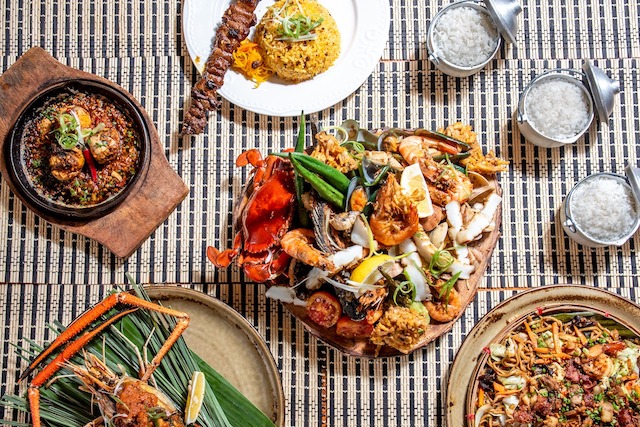True blue foodies, buckle up: Our minds and palates are going on a nationwide food trip this April. With the theme “Pagkaing Pilipino, Susi sa Pag-unlad at Pagbabago,” this year’s Filipino Food Month celebration is set to highlight the country’s rich and diverse flavors, culinary traditions, and ingredients with a series of online and on-site events.
While the pandemic put to a halt most of the country’s tourism activities, the work in promoting and spreading awareness of our local offerings now continues through food, particularly food tourism. The Department of Tourism (DOT), Department of Agriculture, the National Commission on Culture and the Arts (NCCA), and the Philippine Culinary Heritage Movement (PCHM) have put together events that highlight just that.
The past year has seen a number of food debates online and on the national scale (remember the adobo debacle?), but the Filipino Food Month organizers are adamant that no dish must be singled out or left behind.

“Diversity is our strength,” chef Jam Melchor of the PCHM says. “We have different types of adobo, and I think we should promote all of it. We can’t say there’s one recipe for the entire country. That’s why we have to celebrate, to use the diversity to promote our food culture.”
NCCA Executive Director Oscar Casaysay adds, “Ang Pilipinas ay maraming pulo, iiba ang panlasa, but again we come together to celebrate… As a Filipino, gusto natin talagang spectacular. Sa fiesta hindi puwedeng iisang ulam lang. May iba-iba tayong panlasa.”
(The Philippines has a lot of islands, each one with different preferences, but again we come together to celebrate. As Filipinos, we want something spectacular—in a fiesta, we can’t have just one dish. We have different tastes.)
“We have a diverse food culture. And there are a lot of ways to market our food locally and globally,” Casaysay said. “At importante, hindi iisang grupo lang ang magdedesisyon. Malawakang consultation. Mag-food mapping from north to south. Kailangan mag-inventory tayo ng culinary heritage, food products, like what DOT is doing.”
(What is important is that it is not just one group that makes a decision. [There is] extensive consultation with food mapping from north to south. We need to inventory our culinary heritage and food products, like what DOT is doing.)
And with the aim to help more Filipinos discover more about our local cuisine, the organizing agencies have put together a series of online and on-site events running throughout April, such as the KainCon Filipino Food Conference, which was started during the pandemic. The conference is “a series of online talks that brings together Filipino farmers, culinary historians, chefs, and gastronomic experts” with the aim of promoting cultivation and preservation of the local food culture.
Some of the topics to be covered include how to grow your own food, preserving Filipino culinary traditions through gastrodiplomacy and tourism, sustainable food business, and a spotlight on the flavors of Muslim Mindanao.
There’s also the Cinema Culinarya Film Festival, which will showcase short films about our Filipino food identity and heritage. Films included in the competition will be screened online through the NCCA Facebook page throughout April.
Live events are also slated across the regions and abroad. In the Philippines, there’s a street market and rolling karinderya featuring traditional food in Capiz, a food fest and symposium in Palawan, a food expo, demo, and exhibit in Cagayan de Oro; Kadiwa retail selling in Baguio, Laguna, Batangas, and Butuan; and even Filipino food events in China, Japan, and Canada.
For detailed schedules on the Filipino Food Month festivities, visit their official Facebook page.